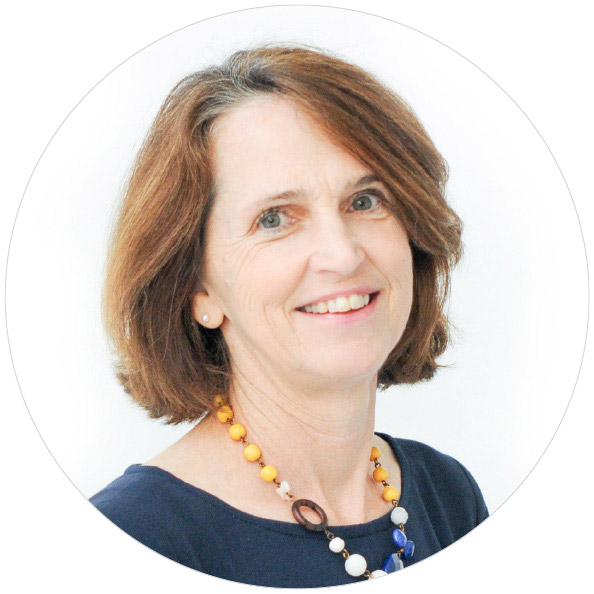By Katie Smith Sloan, President & CEO, LeadingAge
Over the years, I’ve served as a board member — and sometimes as a board chair — for a variety of nonprofit organizations. I’ve loved my board service. It represents one of the best ways I’ve found to make a difference in the areas about which I care the most.
 This is not to say that board service is a walk in the park. Far from it. Being a board member is hard work. Given the increasingly unsettled economic and social climate in our nation and the world, that work promises to get even harder in the future.
This is not to say that board service is a walk in the park. Far from it. Being a board member is hard work. Given the increasingly unsettled economic and social climate in our nation and the world, that work promises to get even harder in the future.
Members of nonprofit boards in the field of aging services make a huge commitment to keep our organizations healthy — not just for today, but for decades to come. Whether these boards succeed in fulfilling that commitment often depends on how comfortable board members are making decisions related to the past, the present, and the future. Unfortunately, according to a well-regarded 2014 study by McKinsey & Company, many boards spend most of their time in the first two arenas, often to the exclusion of the third.
McKinsey researchers found that boards typically spend 70 percent of their time on quarterly reports, audit reviews, budgets, and compliance issues. These fiduciary responsibilities are critical, of course. But there’s a problem with relying solely on this rearview-mirror model of governance.
The aging services sector and the world in which we operate are changing so dramatically that our organizations need to be laser-focused on the future. We simply won’t succeed in growing our organizations and sustaining our missions until we add a “strategic” focus to the “governance” model that we’ve used for many decades. With this added focus, board members can become strategic leaders who help position their organizations to take full advantage of future opportunities and allow those organizations to thrive, even in the face of inevitable disruptions.
Board members unused to strategic governance won’t become strategic leaders overnight, of course. But they’ll be more successful if they follow six preliminary steps:
Commit. Boards must make a formal commitment to increase the time and energy they spend on thinking about the future so their organizations are prepared for whatever comes their way. How much time is enough time? During an online Governance as Leadership presentation, Larry Minnix, my predecessor as LeadingAge President and CEO, advised boards to spend 80 percent of their time focusing on the future and only 20 percent of their time assessing the organization’s past and present performance. How does your board’s annual agenda compare with this guideline? Should the board consider making some adjustments?
Educate. As boards shift their workplans to include a stronger focus on strategic leadership, they must take steps to ensure that board members have the knowledge and skills they need to engage in forward-thinking discussions in collaboration with the CEO and executive team. My recommendations:
- Encourage board members to learn as much as they can about the services and supports your organization provides and how those services and supports are being received by older adults and their families.
- Invite experts to speak to your board about how our field is changing, and how trends related to demographics, economics, technology, service provision, and cultural values are likely to affect your organization in the future. Encourage board members to think about these issues outside of board meetings by sending them relevant articles and resources to study on their own time.
- Take advantage of the governance resources offered by the LeadingAge Learning Hub, including online programs that explore the fundamentals of building strong and effective boards, and how boards can effectively navigate a changing aging services landscape. Registering board members for the LeadingAge Annual Meeting can also help build their knowledge and offer them access to a community of peers.
Recruit. Identify the skills and experience your board needs to carry out strategic leadership. Try to recruit board members with those skills when board vacancies occur.
Start scanning. Strategic leaders don’t use crystal balls to make wild predictions about how the future will unfold. Instead, forward-thinking boards continually scan the horizon for emerging trends, and think deeply about how those trends might impact their organizations. This requires skill, information, and plenty of time for thoughtful discernment, discussion, and collaboration among board members and between the board and the executive team. Throughout this process, board members need to learn how to keep multiple possible futures on their radar screens, envision how alternative futures might unfold, and develop a strategic plan that best supports the organization’s mission and sustainability.
Seek guidance. Scanning the horizon for emerging trends is time-consuming and requires a level of expertise and resources that many boards do not have. That’s why LeadingAge developed a tool that regularly scans emerging issues and interprets them for you. Member organizations can use our Strategic Foresight and Strategy Development resource to gauge the likelihood that emerging issues will affect their organizations. This resource invites your board to ask “what if” questions about the future. For example, what if, in five years:
- Your organization finds itself at the vortex of an emerging age-centered economy?
- Half your workforce is supplemented with artificial intelligence, government-funded family caregivers, and staff outside your current business lines?
- Older adults are working in an on-demand, flexible workforce, and older entrepreneurs abound?
- Nearly all care and services for older people are delivered in community-based dwellings?
The insights your board derives from exploring these and other questions can be used to develop future-informed visions, decisions, and strategic plans.
Get help. As your organization’s leadership journey continues, you may find that you need deeper levels of direct support to help you move to the next level of strategic governance. That support is available to you through LeadingAge Consulting, which offers access to strategic consulting and technical assistance around governance needs.
I’m convinced, as I’m sure you are, that strong governance drives success and sustainability, now more than ever. And I believe strategic leadership is the best way to bolster the strength of our boards and our organizations. I hope you and your board will flex your strategic leadership muscles — and that you’ll call on LeadingAge for any help you need along the way.



